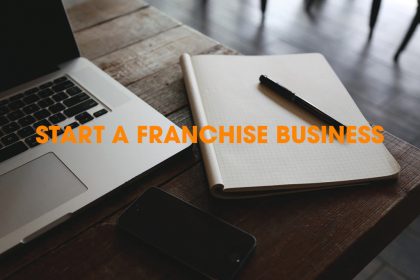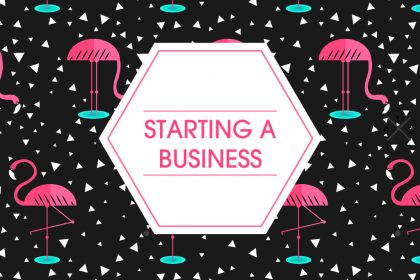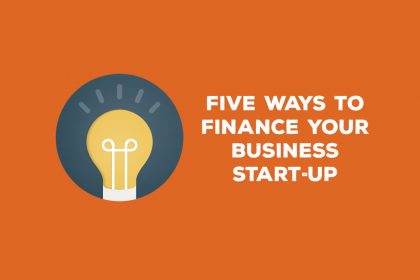Want to make money out of your family’s secret recipe? Here’s how
Got a secret family recipe that your friends all rave over? Always harboured a secret desire to become a foodpreneur? Here’s how to do it.
If there’s one person who knows how to get your beloved family recipe onto the shelves of the nation’s biggest supermarkets, it’s FMCGGenie Jane Gordon.
With over 30 years in retail under her belt, working with, among others, John Lewis, Safeway, Mr Kipling and Budgens, Jane knows exactly what retailers are looking for in food products – and how to get yours in front of them.
The eight questions I always get asked
There’s one in every family they say. No not that! A recipe! Mine is shortbread. A closely guarded secret and super cherished recipe that has been handed down from my Grandad and will continue to be handed down in generations to come.
It’s a failsafe recipe that delivers every time, and I’m certain people would pay good money for it. But I’m not quite ready to let it be surrendered to the masses just yet. But other people are happy to do so, and make some good money out of theirs.
What’s yours? Jam? Toffee? Cake? Lasagne? Or something random like biltong or kimchi? So, if ever you think you might want to take your product or any others for that matter to market, how and where do you even start?
To help you consider your next steps, in this article I answer eight of the most commonly asked questions I get asked about selling a family recipe:
- How long until I start to make some money?
- What packaging should I choose?
- What colours should I use on my packaging?
- What size should my packaging be?
- How do I approach a buyer?
- Do YOU like my product, Jane?
- How do I test the market?
- How do I work out how much to charge?
1) How long until I start to make some money?
Heck! That’s a very loaded question. But if you don’t start, you’ll never get there. I could use many overused business clichés here, but it would all boil down to this: it all starts with taking the first step.
And a plan – after all, a goal without a plan is just a wish. So start with a big piece of paper and thrash it all out.
How long it will take you to reach your goal or indeed start to make money will depend on your commitment, tenacity, cash flow, knowledge, time, resources and how good your product is. And a good dollop of luck and good timing.
I’m pretty certain Levi Roots had no Excel spreadsheet before he arrived on Dragons’ Den, but if ever there was someone who was in the right place at the right time, it’s him!
So take free advice when it’s offered. Never be too proud to ask. There are many forums on social media to guide you through, and a real community spirit between all those who are taking the same path as you. Grab opportunities when they appear. You just never know when something big is just around the corner.
2) What packaging should I choose?
This is a biggie and probably worthy of far more than I’m writing here. In fact, there’s been books and books written about it. As someone who spent seven years in space planning and merchandising this topic is very close to my heart.
From packaging creative, to the shape of the pack and what the outer case should look like, how the product looks is key to its success it’s what makes a customer pick the product up from the shelf (aside from price, promotion, advertising, etc but that’s another conversation!).
To get the packaging right, you need to consider the key message that you would like your brand to communicate, such as:
- Vegan.
- Organic.
- Quality.
- Price.
- New.
- Usage.
- Healthy.
- Indulgent.
- Celebrity endorsement.
- Health benefits.
- Industry awards.
A new product may well be all of these, but you have to work out which is the most important to communicate on the pack. The pack front is only small and, accounting for current legislation, a lot of the pack front is now taken up with nutritional information.
3) What colours should I use on my packaging?
Look at what you like and then look at what your competition is doing. In my humble opinion, you can never know too much. This means you have to really do your homework and check out the brands around you and see how yours will stand out.
See how you can differentiate yours from theirs. You will after all be sharing the same shelf space. And remember that competition does not mean just in your category – a packet of crisps can fill the same need state as sushi. They are both competing for the same eating occasion and pound in your pocket. So how will yours win?
Sometimes opposite colours work. Image the colour wheel (Google it if you need to). It is the spectrum of all colours in one continuous circle.
It is no coincidence that the Heinz blue/green colour they have been using on their bean cans is the polar opposite of the tomato red bean juice colour on the colour wheel. So, while all other brands use red, their green pops out over them all. Clever!
4) What size should my packaging be?
Well this could be dictated to you based on what can be achieved in the factory that you use. But, with a little investment and some self-belief, there is nothing to stop you from using all types of packaging.
I often refer to Ella’s kitchen who have come from nowhere to leading the baby food market in a very short time. Pouches, now considered to be the norm, were totally unheard of back then.
Yet with some deep pockets and I suspect some very clear market research analysis, the brand was launched to high acclaim and now worth over £51m. I’m inclined to think it was probably worth the effort at the early stages!
Read an interview with, and advice from, Ella’s Kitchen founder Paul Lindley.
5) How do I approach a buyer?
Ahhh the $50m question! In short there is no right or wrong to this. The hardest bit will be getting the name of the buyer who you need to contact.
I am almost certain that trying to crack the enigma machine is easier than finding the buyers names. I know of buyers who, when at food exhibitions and shows, will hide their badges to keep their anonymity *rolls eyes*. Equally receptionists at the head offices are also trained to MI5 standard, making the job even tougher.
However, places like LinkedIn can be useful. Or often a buyer will have commented on a magazine or blog post such as The Grocer or equivalent, thus leaving an e-trail behind them.
It’s not easy, and you might need to do some schmoozing to some degree (I’m never too proud for a bit of that: “My, that’s a fantastic tie/shoes you’re wearing!”). But once you have a name, the Gestapo will allow you through the gates of the telephone exchange.
That doesn’t always mean that that buyer will have their phone turned on, though. I know buyers who turn them to silent so as to not be interrupted. In that case, ask for the assistant who is duty bound to pick up calls.
There are many techniques and schmoozy tactics I could suggest, but quite honestly, I’d be here all day. Let’s just say a thick skin and relentless perseverance is needed. And if they do answer the phone, act like it’s the first time you’ve ever tried. “Oh my God I thought you’d never answer!!” doesn’t go down so well.
Getting your foot in the door is something totally different. Their time is precious. Getting any kind of meeting with them is like hens teeth, gold dust and any other analogy for something that is very rare but sought after. This is a much bigger and meaty conversation to have, and involves strategies and planning and a whole lot of Power Point.
Read how two mums, Meriel and Lucy, got their lollies, Claudi & Fin, into supermarkets.
6) Do YOU like my product, Jane?
My answer: does it matter? If it’s a coffee-flavoured something, you can count me out. And cheese for that matter. Not that fond of celery either.
But why would it matter? I may not be your target market. Equally, I might love your product but never buy it as I might also be buying for others (as often happens to be the case) and whether I like something often has no bearing on my purchasing habits.
So whether I (or a buyer) like your product or not has no relevance whatsoever. Do I sound a bit harsh? Sorry. But one swallow does not a summer make.
If what you’re asking is “Do you like my proposition?”, then let’s talk. Does it taste good? Is it fit for purpose? Is the margin such that there is money to be made? Is the branding relevant? It is competitive? Are you on to something?
7) How do I test the market?
Please never be offended if someone doesn’t like your product. Do not set your stall out based on one or two bits of personal feedback, especially from friends and family who will always tell you what you want to hear, not what you need to hear.
However, DO take notice of the majority. Get as much free market research as you can by buddying up with a local deli/butchers/farmshop. With a little gift of some free stock to lubricate proceedings, they will often allow you to set up and talk to their customers for free taste panel research.
Ask specific and targeted questions, not just with yes/no answers, and bingo, you’ve got free feedback. This kind of data is priceless and specific only to your products. This will open doors, footpaths and road ways into larger and potentially more profitable retailers.
Later down the track, larger retailers will happily sell you your own EPOS data back to you or market research companies such as Mintel and Kantar etc will also happily oblige… at a significant cost!
8) How do I work out how much to charge?
Spreadsheet. Spreadsheet. Spreadsheet. Calculations on the back of fag packets work well initially but if you want to run a proper profitable business then you will need something a little more robust.
Every product will pan out a little differently, but essentially the things you will need to account for will be the following:
- Raw materials.
- Label and packaging.
- Machinery.
- Energy.
- Insurance.
- Distribution (most retailers will want a delivered price).
- Storage.
- Marketing.
- Sampling.
- Wastage.
- Consultancy services such as bookkeeping, accounting, PR.
Only once you’ve factored in these costs can you put a margin on it for yourself. Then you need to consider tax. You can also expect a retailer to put a margin on for their product which, dependent on channel (retailer, food service, travel etc) and category (food, drinks, non-foods etc), can range from 10% to 100% and more. The average for a food product in a multiple retailer would be 35%-ish.
Along with some industry accreditations, larger retailers will expect a full year’s marketing plan too, with a confirmed four or five promotions each year. Then, and only then, can you expect to work out a final RRP. Once you’ve done that, you need to see how competitive it is. Not competitive enough? You’re back to your spreadsheet.
That’s food and drink in retail
So there you go. A small snapshot into my world of food and drink in retail. My world. One that I love, am passionate about and will take me into old age.
If any of this resonates with you and you’d like to chat more about things, feel free to get in touch. I love an excuse to enjoy the three Cs, chatting, cake and company. Just not coffee and celery!
Find out more about Jane and how she can help you launch a food product on her website.










